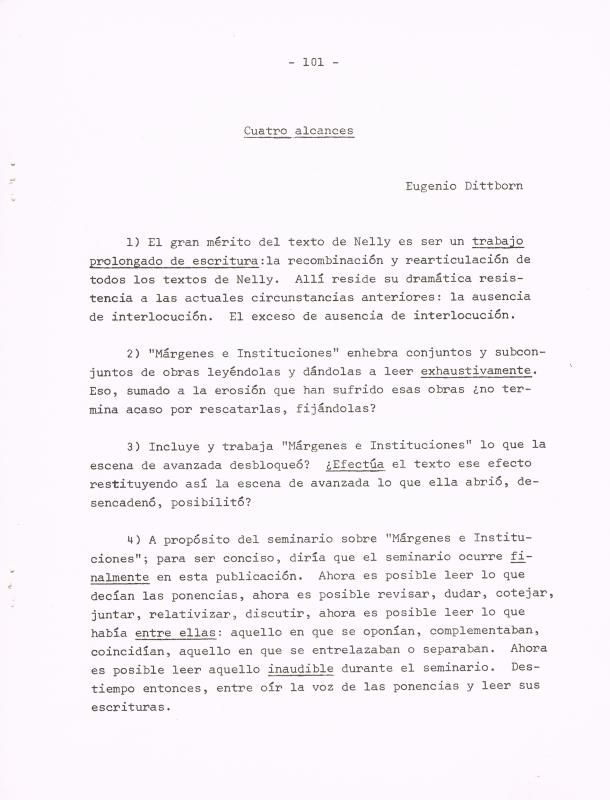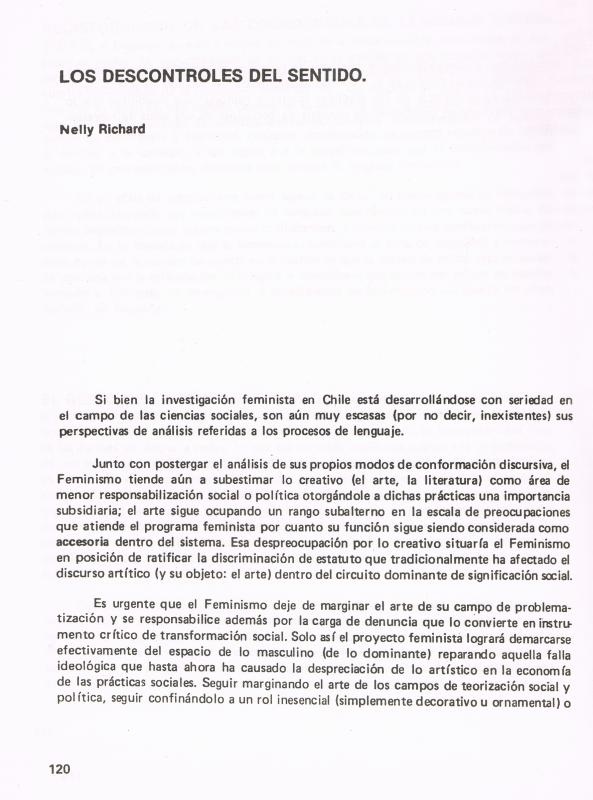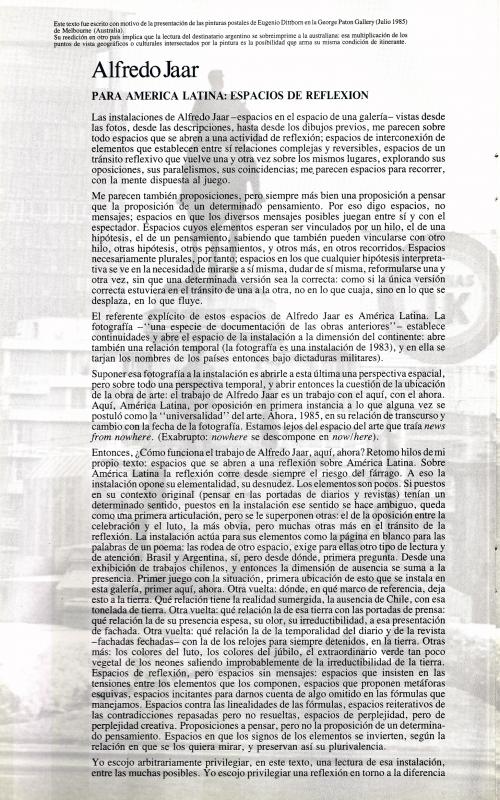La escritura crítica y su efecto: una reflexión preliminar is a text by essayist Adriana Valdés (b. 1943) that was among the materials from the seminar Arte en Chile desde 1973. Escena de Avanzada y sociedad published by the Facultad Latinoamericana de Ciencias Sociales (FLACSO), Galería Visuala, and edited by Francisco Zegers. The seminar was inspired by the publication—in Australia (1986)—of Margins and Institutions. Art in Chile Since 1973, the book by cultural critic Nelly Richard (b. 1948); it included artists from the Escena de Avanzada and a number of writers, theorists, philosophers, artists, and social scientists who were closely involved in that process. The texts that were collected and published in Documento no. 46 addressed the “discussion about avant-garde Chilean art after 1973,” as noted in the introduction to the publication, and sought to provide material for analysis and discussion about the relationship between art and society in Chile. [See “Cuatro alcances” (doc. no. 738646) in the ICAA Digital Archive.]
Escena de Avanzada was the name that Nelly Richard coined to refer to a number of neo-avant-garde artists and practices that challenged art, its forms of production, and its context in a country governed by a military dictatorship. The movement produced unofficial art that sought to foster critical awareness and a commitment to resistance. The main art practices of the time therefore focused on works that could challenge the dominant culture.
The Avanzada period was characterized by a fruitful overlapping of the movement’s art production and editorial work. Richard proposed the existence of a “writing scene,” which Valdés described at length in her essay as “quasi-underground writing.” According to Richard, the scene she was referring to focused on art production as well as literature, philosophy, and feminist criticism. She, Diamela Eltit (b. 1949), and Valdés were the main figures involved. The feminist criticism the three women embraced addressed the minority issues and repression that were considered women’s themes, allowing them to use an artistic tradition to challenge the dominant discourse that had been bolstered by the military dictatorship. [On the subject of Richard’s feminist ideas, see the following in the ICAA Digital Archive: “Los descontroles del sentido” (doc. no. 732038).]
In her essay, Valdés discusses the Avanzada, but her focus is broader than that because she also worked with other artists—Alfredo Jaar and Roser Bru, for example—who, despite producing other types of art, were also involved in the group. Jaar, in fact, produced most of his art outside Chile. [On this matter, see: “Alfredo Jaar: Para América Latina espacios de reflexión” (doc. no. 734782); and, on the subject of Roser Bru, see: “Los ojos de los enterrados” (doc. no. 740321).]




